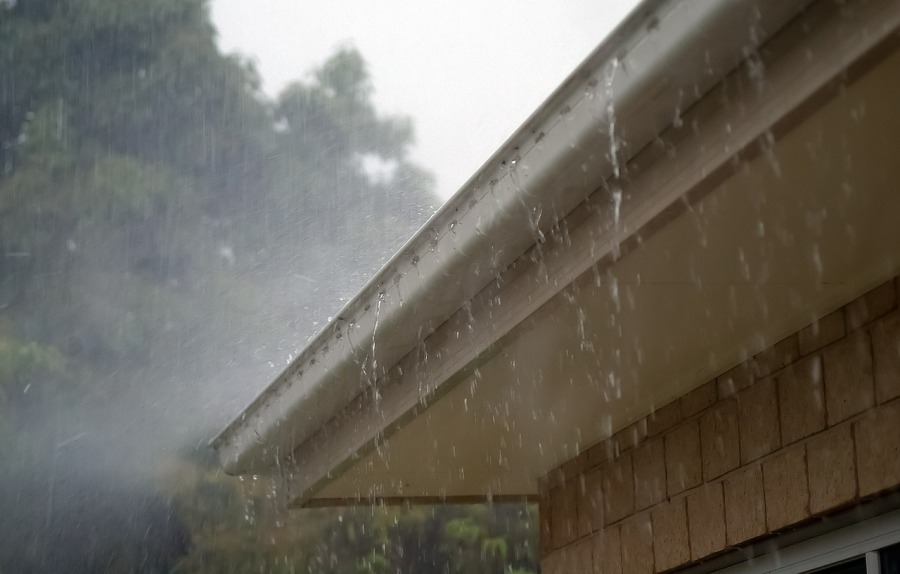The matter of drainage is the essential function of your roof. In fact, the very shape of a roof (a traditional roof) was designed with drainage in mind. However, in some climates and architectural styles, flat roofs are far more popular. While this may be more aesthetic, it leaves the question of drainage partially unresolved.
Fortunately, there’s always a solution to the problem, you just need to review your options and choose the one that fits your particular situation the most. With that in mind and without further ado, here are the top four most efficient drainage systems for flat roofs out there.
1. Gutters
Gutters are the method used for traditional roofs but there’s a way to make it all work on flat roofing, as well. First, let’s mention the downsides of this method on a flat roof. Gutters, especially when old, are likely to clog and overflow. This could cause the accumulation of water on the roof, which is far more problematic on a flat roof.
So, regular maintenance, as well as an occasional gutter replacement can help prevent this problem. This is also one of the best ways to avoid roof debris, accumulation of ice during winter and some additional issues.
2. Interior drains
This method is ingenious in its simplicity. The way it works is that you place drains across the middle of the roof. These lead inside and then out through the series of gutters and pipes. The advantage of this method is that it doesn’t allow for too big water accumulation and it is much harder for the debris to get trapped inside (and cause the clog).
From the visual standpoint, this is also quite appealing, seeing as how your drainage solution is mostly concealed. Needless to say, this is perhaps the best way to keep the walls and foundations around your flat roof dry and safe.
3. Scuppers
Another great idea is to install scuppers on your flat roof. The way this works is fairly simple – you install scuppers along the edge of your roof and guide the water down. The difference between scuppers and gutters is in the fact that they don’t line along the entire edge of the roof. Their function is mostly gravity-based.
Also, without the downspout to lead the water down to the drain, these scuppers need to be more strongly angled downward. This way, the momentum of the moving water will keep the rainwater away from your roof, walls and foundations. Just make sure to consult the professionals first.
4. Sloped insulation
One of the most creative ways to deal with the water on the flat roof is to go for sloped insulation. Even here, you get to choose between true sloped insulation and step sloped insulation. The way this works is quite simple, you get water-resistant insulation and use it to create the ramp that will lead the water downwards.
A small slope is nearly impossible to notice but gravity will still do its trick. Step sloped insulation is a more frugal option and it tends to be far more cost-effective. Either of the two methods will work.
In conclusion
Each of the above-listed methods is quite efficient but the preferred one depends on several aspects. Your budget plays a huge role here, as well as the amount of rainfall that you expect in the season. Other than this, the aesthetics of the drainage method shouldn’t be underestimated either.
After all, the aesthetics affect your perception of the place, as well as its resale value. In other words, although important, the drainage system is just one element in your home’s design (one cog in much larger machinery).

